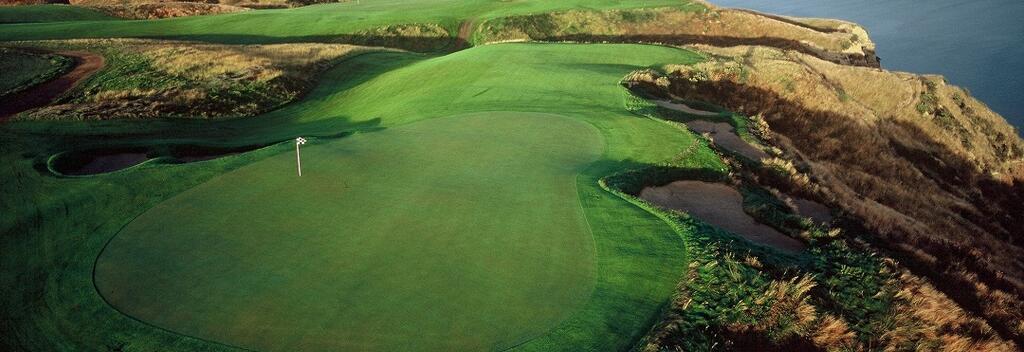-
Beliebte Ausflugsziele
Beliebte Aktivitäten
Nützliche Tipps
Hier findest du nützliche Links, die dir bei der Planung deiner Reise nach Aotearoa Neuseeland helfen.
-


Home to more than 400 courses, golfers will always find something that appeals when they visit New Zealand.
A well-designed golf course tells you something about the land it’s in. American courses are often big, bold, brash, dynamic and long; while British courses on the other hand often have quirky personality traits. Kiwi golf courses have their own personalities as well, but recently the off-shore influence from the work of designers like Tom Doak, Jack Nicklaus and David Harman has added a welcome and eclectic element to personality of Kiwi courses.
Some of New Zealand’s finest players, after retiring from playing, successfully turned to course design. Sir Bob Charles, Greg Turner and Phil Tataurangi bring to their design work a key blend of extensive playing careers from around the world with a strong understanding of the New Zealand golfing culture. Their courses have a strong kiwi feel about them. Sir Bob and Phil Tataurangi, like Greg Turner, are all admirers of the old traditional Scottish architectural style. New Zealander Kristine Kerr is one of the world’s few female golf course architects and brings home her international design experience on championship, residential and member’s courses applied with the unique kiwi aesthetic. Her courses favour enjoyment, strategy and beauty to suit their distinct environment.
New Zealand has the highest number of links courses outside Great Britain, many of which were built 70 - 80 years ago on free draining soil. Normally such highly prized arable land would be ear-marked for agriculture, but because this type of land was in such abundance when the early settlers arrived, many courses were built on this sought-after soil.
In New Zealand, a neat contrast exists between the traditional British-style courses, evidenced by the large number of parkland courses with their rows of neatly cut trees and gardens, with the more modern and dynamic privately developed courses with their eye-catching aesthetics. Two fine examples of the latter are Kauri Cliffs and Cape Kidnappers, both ranked inside the 2013 World’s Top 100 list. Part of the attraction of these courses is also their locations – both are perched high on dramatic cliff tops that run along panoramic coastlines.
David Harman, designer of Kauri Cliffs, recognized the important part pastoralism plays in the life of New Zealand when he designed this course. The original site was a farm and Harman decided it should remain a farm, building the course inside the farm itself.
The influence of Alister MacKenzie, evident in the work of local course designers, is hardly surprising given that many of these New Zealand designers learnt to play on these old-style British courses. But a fleeting visit by MacKenzie to Auckland back in the late 1920’s had a profound effect on these men. Here, he visited a new course called Titirangi. He thought the construction of the holes was good, and set about sketching a set of improvements which were completed just before the end of the last century. Titirangi is considered a MacKenzie jewel, embracing many of the principals essential to a well-designed course - a large proportion of good two-shot holes, little walking between greens and tees, fairways and greens undulating but no hill climbing and a minimum of blind shots. Titirangi’s four par 3’s all point in different directions, so it doesn’t matter which angle the wind blows - each par 3 plays differently every round. And it’s that subtlety that has shaped the thinking behind the design of many of New Zealand’s modern courses.
New Zealand is one of the easiest countries in the world to play a game of golf, but with this accessibility comes extraordinary diversity – thanks to a choice of 400 unique courses waiting for you to play.
Nach Angeboten suchen